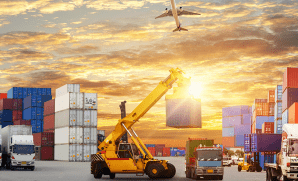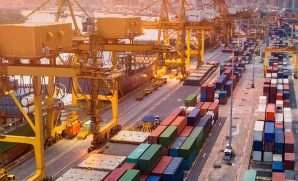Drive Collaborative Supply Chain Performance with Technology
Publish Date: July 2, 2020Global manufacturing enterprises handle a vastly complex production process and supply chain operations.
They face an increasingly complex climate of risk through global sourcing, sustainability regulations, geopolitical uncertainties, natural disasters, and IP security concerns. The lack of visibility in the end-to-end supply chain, including Tier II & Tier III suppliers, amplifies these risks. A different approach to manage the supply chain is the need of the hour for manufacturers who are facing the amazon effect that is pushing them to perform at the speed of retail.
Map the magnitude of impacts from supply chain risks with a simple example of classification:

Figure 1 – Source Mckinsey – https://www.mckinsey.com/business-functions/operations/our-insights/supply-chain-risk-management-is-back
Let us explore how advanced technologies have a significant role in easing these pain points and avoiding downstream surprises.
Avoiding downstream surprises with holistic visibility
The lack of risk transparency in each segment of the supply chain can create a fundamental lack of trust among partners.
The goal with supply chain visibility (SCV) practices is to have a more transparent, accurate, and real-time insights to quality, delivery, and cost. For this, linking technologies such as connected ERPs and RPA together to create an environment of a self-compensating supply chain can provide outstanding results. Predicting and reacting to changes in real-time can help in increasing the duration of responding to changes. RPA removes the delay of the human element and can fill a void where a capable workforce might be constrained. Technology enables manufacturers to build robust links between disparate and siloed functions (procurement, logistics, sales, planning, etc.). However, new data sources and technologies increase the speed of automation, accuracy of algorithms, and further integrated system can establish the pathway to more agile and accurate decision-making.
Connected supply chains and ERP systems can create lead to risks of data security and lead to uncertainties. Therefore, proven supply chain technologies such as blockchain have emerged to ensure trust among suppliers and safety for the organizational data. Blockchain-enabled supply chain transactions can securely record critical multi-tier supplier information. When allowing that essential warranty, source, design, cost, or component information to securely pass from Tier III suppliers through each leg of the supply chain, where additional critical elements are captured, and finally land with the finished product at the customers. Thus, the future supply chains can have the ultimate level of transparency by providing access to vital information with role-based rights.
The use of AI and machine learning can provide predictive insights into increase traceability of supplier networks and predict the impact of supply interruptions. Furthermore, it can act as a guiding light to leadership on potential reactive measures to take to decrease the overall effect. The use of RPA can expedite reporting, supply chain planning, uploading of information, creating higher quality outputs, and with added efficacy. The use of advanced analytics can help supply chains be agile enough to quickly re-route shipments or even provide alternative logistic network designs in real-time. It can help to increase velocity and adapt to the speed of retail in the manufacturing industry.
Trust is a must in supply chain
The value of change that Industry 4.0 enables is realized when IT and OT converge strategically and are applied with precision. These technologies are neither inter-dependent nor required for sequential deployments, but they do require a meticulous coordinated approach to obtain the maximum value at scale.
Technologies offer the vital ingredient of trust through transparency when converged in harmony, rather than being deployed in existing organizational siloed. Only through the practical application of new technologies, can the physical and digital merge to create the necessary transparency to react to disruptions, regardless of magnitude, seamlessly.


















